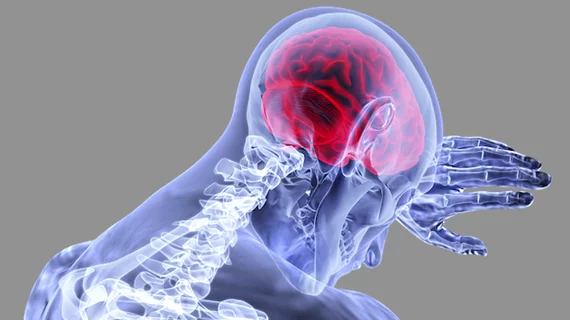MRI may expand tPA treatment to include unwitnessed stroke patients
Recent study findings from Massachusetts General Hospital (MGH) researchers may increase the number of stroke patients who can safely be treated with tissue plasminogen activator (tPA ), or alteplase.
According to an MGH press release published April 24, MGH researchers used MRI technologies to identify patients likely to have a stroke within 4.5 hours, even though symptoms went unwitnessed.
tPA, first approved by the FDA in 1996, is used to treat ischemic stroke by treating blood clots in the brain when no rupture of a blood is evident.
A 2009 study expanded the original time limit for tPA administration from 3 to 4.5 hours from symptom offset. However, tPA is not approved to use in patients whose symptoms are not witnessed and who are more than 4.5 hours since last known to be well. This negatively affects 25 to 30 percent of ischemic stroke patients, according to the press release.
“In up to 25 percent of stroke patients, the start of their symptoms is unwitnessed, preventing them from receiving tPA,” said co-lead and corresponding author Lee Schwamm, MD, executive vice chair of the MGH department of neurology and director of the MGH Comprehensive Stroke Center. “For many of these patients, the first time anything is noticed is when they get up from sleeping. Our study showed—for the first time—that tPA could be given safely to patients with stroke of unwitnessed onset if their imaging suggested the stroke was very early in its progression and they met other treatment criteria.”
In the study, the team recruited 80 patients with imaging-confirmed ischemic stroke of unwitnessed offset and who were less than 24 hours since known to be well.
"Study eligibility was determined by a mismatch between two types of MR imaging studies—FLAIR, which typically only shows stroke effects on brain tissue after several hours of reduced blood flow, and diffusion-weighted imaging (DWI), a technique first applied to stroke patients at the MGH-based Athinoula A. Martinos Center for Biomedical Imaging that is extremely sensitive to changes beginning in the first minutes or hours after stroke onset," according to the press release.
Co-lead author of the study Ona Wu, PhD, of the Martinos Center explained brain tissue that is abnormal on DWI but not yet on FLAIR has in fact been seen in patients that were 4 hours or less after known symptom onset, according to the press release.
"That discrepancy provides a snapshot of tissue evolution as the stroke progresses in the first few hours, and that is the pattern we used to select patients for treatment, since they were likely to be similar to patients with known symptom onset who have benefited from tPA," Wu said in a prepared statement.
The researchers used MR Witness to identify patients who may be treated with tPA because their strokes hadn't progressed to the point of irreversible injury, Wu explained according to the press release. All 80 participants who received tPA based on what the strategy "qDFM" (quantitative DWI FLAIR Mismatch) mirrored patients receiving tPA within 4.5 hours of witnessed strokes. Additionally, researchers reported that 70 percent of participants experienced wake-up strokes.

